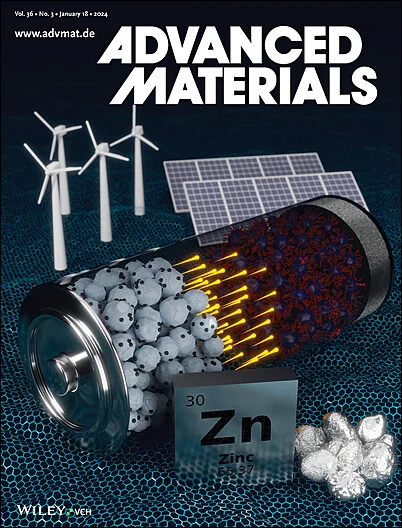Crystal Orientation Engineering for Energy Storage and Conversion Applications.
IF 27.4
1区 材料科学
Q1 CHEMISTRY, MULTIDISCIPLINARY
引用次数: 0
Abstract
Nanoscale material design is crucial to the development of efficient renewable energy and storage technologies. While conventional research paradigms have emphasized material morphology, crystal polymorphs, and defect engineering, recent years have witnessed an emerging research interest in crystal orientation engineering since it can exploit anisotropic material properties to significantly enhance emerging energy storage and conversion applications. Herein, a comprehensive review of engineering the crystal orientation of materials to improve various energy conversion and storage technologies is provided. First, we discuss the effect of crystal orientation on material properties, including electrical conductivity, dielectric constant, surface energy, surface electronic structure, atom/molecule adsorption ability, and ionic conductivity. Then, the techniques to characterize the crystal orientation, including X-ray diffraction, transmission electron microscopy, scanning electron microscopy, Raman spectroscopy, and optical microscopy, are reviewed. After that, effective strategies to engineer crystal orientation using both bottom-up and top-down approaches are summarized. The advances in crystal orientation engineering in energy conversion (electrocatalysis, solar cells, and nanogenerators) and storage (metal anodes, non-metal-based electrode materials, and solid electrolytes) applications are subsequently discussed. Finally, future perspectives on the potential of crystal orientation engineering and its impact on emerging energy transition technologies are summarized.晶体取向工程在能量存储和转换中的应用。
纳米材料设计对于高效可再生能源和储能技术的发展至关重要。虽然传统的研究范式强调材料形态、晶体多晶和缺陷工程,但近年来晶体取向工程的研究兴趣日益浓厚,因为它可以利用材料的各向异性特性来显著增强新兴的能量存储和转换应用。在此,全面回顾了工程材料的晶体取向,以改进各种能量转换和存储技术。首先,我们讨论了晶体取向对材料性能的影响,包括电导率、介电常数、表面能、表面电子结构、原子/分子吸附能力和离子电导率。然后,综述了表征晶体取向的技术,包括x射线衍射、透射电子显微镜、扫描电子显微镜、拉曼光谱和光学显微镜。然后,总结了使用自底向上和自顶向下两种方法来设计晶体取向的有效策略。随后讨论了晶体取向工程在能量转换(电催化、太阳能电池和纳米发电机)和存储(金属阳极、非金属基电极材料和固体电解质)应用方面的进展。最后,总结了晶体取向工程的潜力及其对新兴能源转换技术的影响。
本文章由计算机程序翻译,如有差异,请以英文原文为准。
求助全文
约1分钟内获得全文
求助全文
来源期刊

Advanced Materials
工程技术-材料科学:综合
CiteScore
43.00
自引率
4.10%
发文量
2182
审稿时长
2 months
期刊介绍:
Advanced Materials, one of the world's most prestigious journals and the foundation of the Advanced portfolio, is the home of choice for best-in-class materials science for more than 30 years. Following this fast-growing and interdisciplinary field, we are considering and publishing the most important discoveries on any and all materials from materials scientists, chemists, physicists, engineers as well as health and life scientists and bringing you the latest results and trends in modern materials-related research every week.
 求助内容:
求助内容: 应助结果提醒方式:
应助结果提醒方式:


